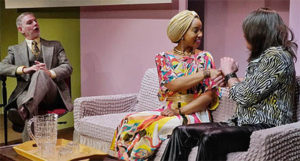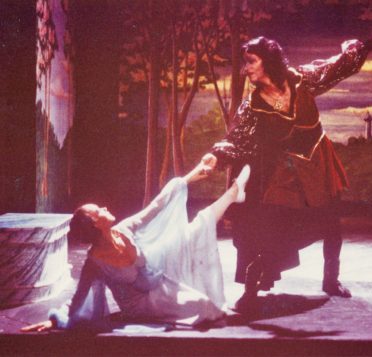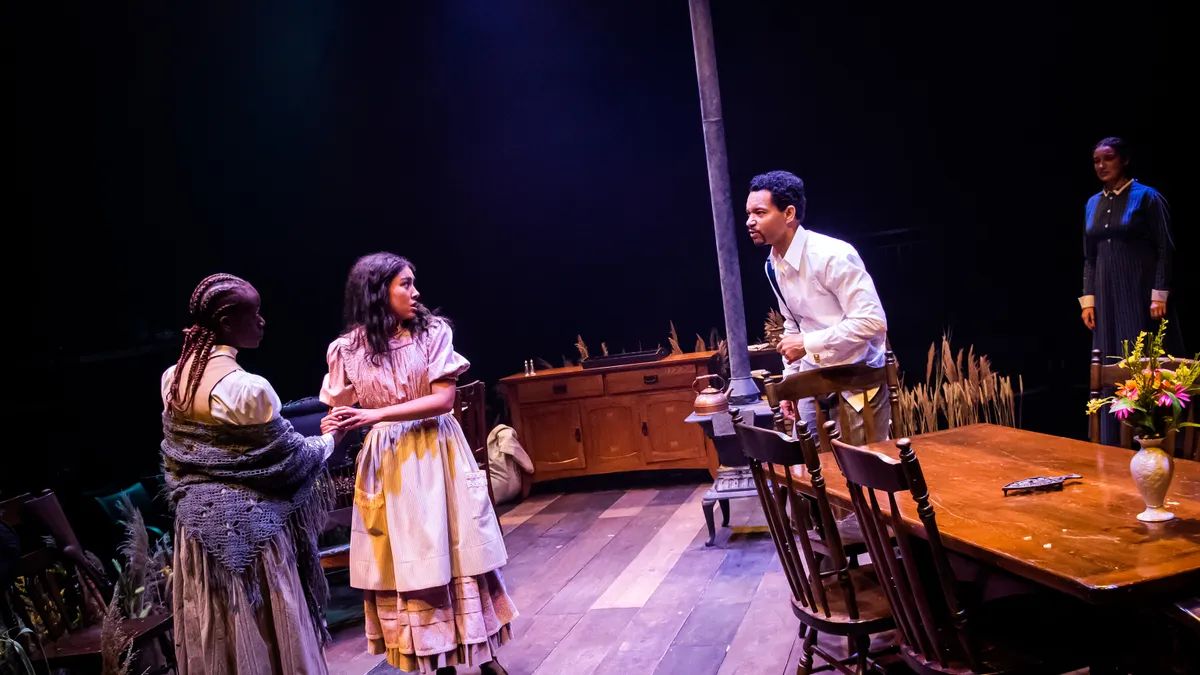Review by Neal Newman
June 19, 2022
The great black artist, Hattie McDaniel, when asked by a not too bright reporter why she only played maids, once quipped, “Honey, I can get $500 a week playing one, or $50 a week being one.”
There were no choices for Black actors in Depression-era Hollywood. Performers with Shakespearian training had to speak in the expected dialect and act as subservient as possible. Many, like McDaniel, managed brilliant performances despite the limitations. Things have changed somewhat today, but those films still remind us of who we were and still are.
After terrifyingly brutal works like SWEAT or RUINED, playwright Lynn Nottage turns her hand to farce, which is deliriously funny. The show closes on June 26, so set your calendar now. The audience on Father’s Day/Juneteenth was small and socially distanced, but the laughter was loud and hearty.

The play’s premise is so outrageous that I’ll allow the director’s notes to explain it.
Vera Stark is a Black actress who gets thrust into pre-Code Hollywood fame because of her role in a “Southern Epic.” We see Vera and two other Black actresses as they all vie with humor, innovation, and frustration to “make it big” on the silver screen. Vera’s sudden and unexpected stardom leads to both a long career in movies and, later in life, to controversies addressed in TV shows and symposia decades later.
The first act is pure farce and, as beautifully staged by skilled director Suki, is hilarious. The three actress roommates go through countless humiliations to audition in their real-life maids’ outfits for roles in this obviously racist film.
Act Two breaks a cardinal playwrighting rule: Never switch styles in the middle of the play. The second act, set in modern times, is in a college lecture hall and a TV studio. Now there is more satiric comedy as three modern professors discuss the current racial situation and hawk their books. Audience members may be disappointed if they were hoping for more farce as the depression actresses climbed the Hollywood ladder. But if you are Lynn Nottage, you can get away with anything. I liked it. This allowed the playwright to offer her thoughts on the contemporary situation.
The director Suki has found an exceptional cast who deserves the extra space below. Most are making their Barnstormers debut, with some appearing on stage for the first time. Darrah Lashley is delightful as Vera, as both the eager young actress and the cynical older woman years later. She makes her stage debut here and carries the show with ease. Tanya O’Neill and Candace Miller add to the comedy as the older Shakespearian roommate and the floozy who gets ahead by “acting” as exotic foreigners. Later O’Neill becomes a Ph.D. in Black Studies with an African outfit and attending “attitude.” Miller appears as a lesbian pundit with an equal “attitude.” The erudite host of the symposium is skillfully characterized by Tyler Andrews, who in Act One was a horndog hustler who claims to be a great trumpet player but works as a chauffeur. Elena Nahrmann plays Gloria, an overage child actress once known as “America’s Cutie Pie,” but is now desperate for the leading role in the upcoming epic. Being white is an obvious advantage to Gloria, as her IQ is in the single digits, proving that talent is not necessarily a requirement for screen stardom. Nahrmann is terrific as this actress who is never off stage. Later she visits Vera in the TV studio. Vera has had limited opportunities and is dissolving into drugs and drinks, but Gloria remains as narcissistic as ever. The two white men (Tom Tansey and Brian Scott Campbell) offer some age and experience as two Hollywood big wigs reminiscent of Louis B. Mayer and Michael Curtiz. Later Tansey plays an obnoxious Merv Griffin-type TV talk show host, whose guests include Campbell as a stoned British rock star. I want to see these actors in their subsequent roles. I hope they’ll let me know.

Costumes by Jen Allegra, Claire Adams, Janet Gilmore, and Joan Blake fit the characters perfectly with maid uniforms and tuxedos for the first act and a riot of 1970s clothing for the 1973 TV show. The set by Scott Killinger effectively crams the many settings onto the time stage, but the set decoration fails to convey the vulgar narcissism of the star’s living room and the TV show. There is also an excellent film clip showing a scene from the “Epic” film. It is great fun with effect 30’s style melodramatic music.
Nottage has written another skillful historical event that challenges White and Black audiences to evaluate current society.
Running Time: Two hours and thirty minutes with an intermission. Masks and vaccination proof are required.
BY THE WAY, MEET VERA STARK plays through Sunday, June 26, 2022, at the Stagecrafters Theater – 8130 Germantown Avenue, in Philadelphia, PA (Chestnut Hill). Call the box office at (215) 247-9913 or purchase tickets online.









